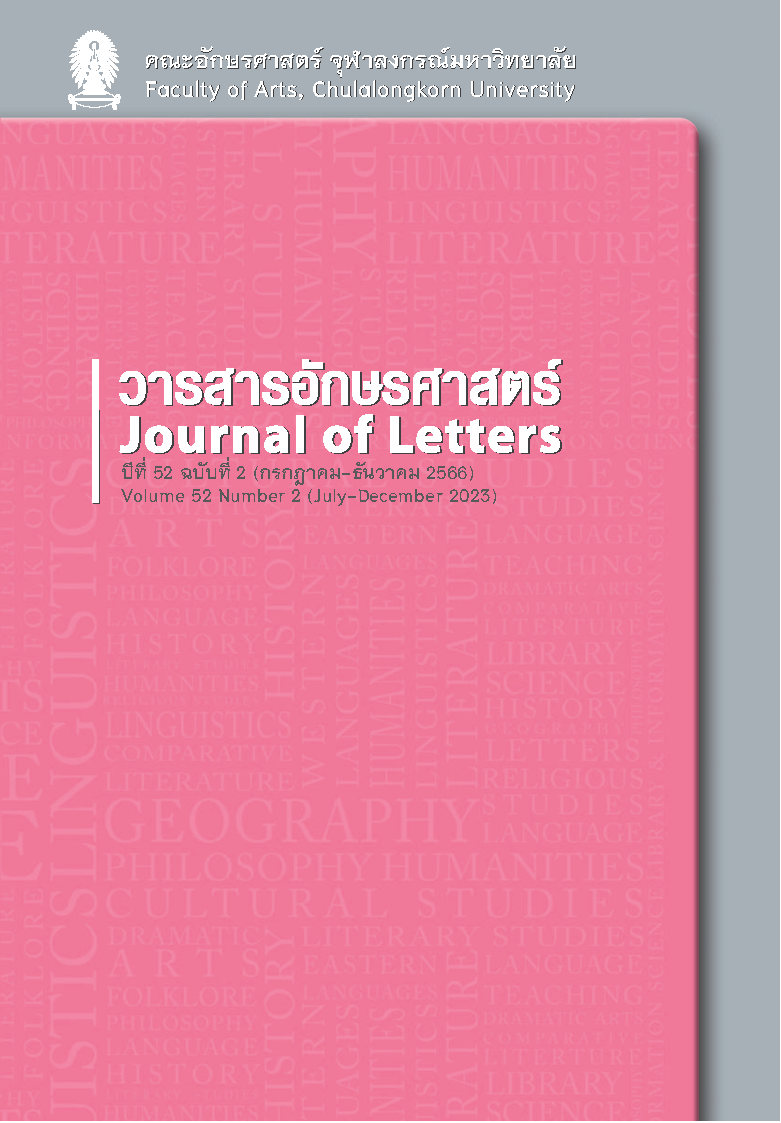Infernal Symbioses:
Reading Dante’s Inferno in the Chthulucene
Keywords:
Chthulucene, Dante Alighieri, symbiosis, Inferno, posthumanismAbstract
This article explores the possibility of foregrounding Dante’s Inferno from the epic La Divina Commedia in this day and age of environmental crises. This catastrophic state has androgenic origins and has been labeled by climate scientists as the “Anthropocene” – a new geological era marked by the ways in which humanity has irrevocably altered the earth system. Nevertheless, Donna Haraway has voiced her opposition against this classification, postulating that it contains too much nihilistic and pessimistic connotations that function to discourage humans from doing the work necessary to alleviate the crises. Haraway therefore proposes “Chthulucene” to denote the temporally and spatially nonspecific epoch in which humans must learn to live with the trouble. This article features a re-reading of Dante’s Inferno in the scope of the Chthulucene. It shows that even though the work was written in the medieval period, it is still possible to read Inferno in the Chthulucenic context. This possibility draws upon the discovery that (1) the narrative focuses on the journey of the protagonist through a blasted landscape of Hell, which is described as ruins, and (2) in order to get through such a landscape, it is imperative to build alliances with other beings, which is comparable to what biological science calls symbiosis.
References
ภาษาไทย
Chairat Polmuk ชัยรัตน์ พลมุข. (2019). Tritsadi patsarom (Affect Theory) kup kan sueksa wannakam ทฤษฎีผัสสารมณ์ (Affect Theory) กับการศึกษาวรรณกรรม [Affect Theory and Literary Studies]. In Suradech Chotiudompant (Ed.), Nawa withi: Withi witthaya ruam samai nai kan sueksa wannakam นววิถี: วิธีวิทยาร่วมสมัยในการศึกษาวรรณกรรม [New Way: Contemporary Methodologies in Literary Studies] (pp. 323-372). Sayam.
Ming Panha มิ่ง ปัญหา. (2019). Lang manutsaya niyom kup wannakadi wichan: korani sueksa dan pawa witthaya cheong watthu khong Graham Harman (Graham Harman) หลังมนุษยนิยมกับวรรณคดีวิจารณ์: กรณีศึกษาด้านภววิทยาเชิงวัตถุของแกรห์ม ฮาร์แมน (Graham Harman) [Post-Humanism and literary studies: Case studies in Graham Harman’s object-oriented ontology]. In Suradech Chotiudompant (Ed.), Nawa withi: Withi witthaya ruam samai nai kan sueksa wannakam นววิถี: วิธีวิทยาร่วมสมัยในการศึกษาวรรณกรรม [New way: Contemporary methodologies in literary studies] (pp. 439-494). Sayam.
Thai Standard Version Bible. (2023). YouVersion. Retrieved January 2, 2023, from https://www.bible.com/th/bible/174/GEN.1.27.THSV11
Yukti Mukdawijitra & Chutchon Ajanakitti ยุกติ มุกดาวิจิตร และชัชชล อัจนากิตติ. (2021). Manutsaya witthaya phon manut มานุษยวิทยาพ้นมนุษย์ [Posthuman anthropology]. Princess Maha Chakri Sirindhorn Anthropology Centre (Public Organization).
ภาษาต่างประเทศ
Alighieri, D. (2015). Commedia Il racconto: Vol. I Inferno. Latorre Editore.
Barolini, T. (2018). Inferno 8: In Medias Res . . . at the “Secret” Gate of Dis. Digital Dante. Retrieved June 18, 2023, from https://digitaldante.columbia.edu/dante/divine-comedy/inferno/inferno-8/
Bourdieu, P. (1998). Practical reason: On the theory of action. Stanford University Press.
Bruce, S. G. (2018). The Penguin Book of Hell. Penguin Classics.
Brusatte, S. L. (2020). The rise and fall of the dinosaurs: The untold story of a lost world. Picador.
Cambridge University Press. (n.d.). Such. In Cambridge dictionary. Retrieved July 19, 2023, from https://dictionary.cambridge.org/us/dictionary/english/such
Carson, C. (Trans.). (2002). The Inferno of Dante Alighieri. New York Review Books.
Haraway, D. J. (2016). Staying with the trouble: Making Kin in the Chthulucene. Duke University Press.
Heaney, S. (2016). Aeneid Book Vi. Faber & Faber.
Hibbert, C. (1994). Florence: The biography of a city. Penguin Books.
Isidore (2005). The etymologies of Isidore of Seville (S. A. Barney, Trans.; Vol. 12). Cambridge University Press.
Kirkpatrick. R. (2006). Introduction. In D. Alighieri, Inferno (pp. xi-civ). Penguin Classics.
Margulis, L. (1998). Symbiotic planet: A new look at evolution. Basic Books.
Martinez, R. L., & Durling, R. M. (1996). “Notes to Canto 9”. In R. M. Durling (Ed. & Trans.) & R. Turner (Ill.), The divine comedy of Dante Alighieri (Vol. 1, Inferno Illustrated Edition, pp. 148-153. Oxford University Press.
Milani, G. (2021). Florence and Rome. In M. Gragnolati, E. Lombardi, & F. Southerden (Eds.), The Oxford handbook of Dante (pp. 336–352). https://doi.org/10.1093/oxfordhb/9780198820741.013.24
Mitsch, W. J., & Gosselink, J. G. (2015). Wetlands (5th ed.). John Wiley & Sons.
Raymond, J. (2010). Milton's angels: The early-modern imagination. Oxford University Press.
Santagata, M. (2016). Dante: The story of his life. The Belknap Press.
Schaefer, D. O. (2015). Religious affects: Animality, evolution, and power. Duke University Press.
Seckbach, J., & Grube, M. (2010). Symbioses and stress: Joint ventures in biology. Springer Dordrecht.
Sheldrake, M. (2020). Entangled life: How fungi make our worlds, change our minds & shape our futures. The Bodley Head.
Tsing, A. L., Swanson, H. A., Gan, E., & Bubandt, N. (Eds.). (2015). Arts of living on a damaged planet: Monsters of the Anthropocene. University of Minnesota Press.
Downloads
Published
How to Cite
Issue
Section
License

This work is licensed under a Creative Commons Attribution-NonCommercial-NoDerivatives 4.0 International License.
Copyright and plagiarism
Authors are responsible for obtaining permission to use copyrighted materials from copyright owners. Authors are responsible for observing requisite copyright law when quoting or reproducing copyrighted materials. Quotations and reproductions of content from other published sources must be accompanied by a reference and all sources should be clearly listed in the references section. Quotations and reproductions of content from external sources without due attribution could be considered a severe infringement of academic conduct and may constitute a legal offence under the Copyright Act of B.E. 2537. Any legal ramifications arising from the infringement of copyright regulations would be the sole responsibility of the author(s).



